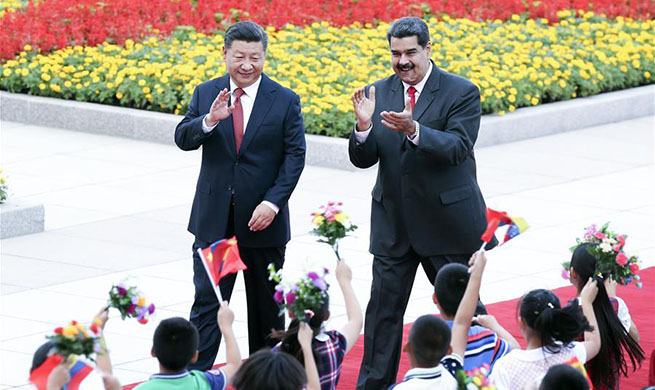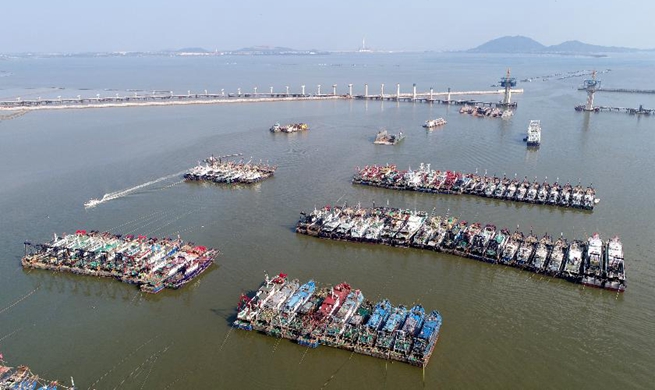MANILA, Sept. 14 (Xinhua) -- The Philippines' outstanding external debt stood at 72.2 billion U.S. dollars as of end-June 2018, down by 997 million U.S. dollars or 1.4 percent from end-March 2018 level of 73.2 billion U.S. dollars, the Philippine central bank said on Friday.
Bangko Sentral ng Pilipinas (BSP) Governor Nestor Espenilla said the reduction in the debt stock during the second quarter was mainly driven by negative foreign exchange (FX) revaluation adjustments as the U.S. dollar strengthened against third currencies, particularly the Japanese yen.
"The decline in non-resident investments in Philippine debt papers and net principal repayments further contributed to the decline in the external debt stock," Espenilla added in a statement.
Year-on-year, he said the debt stock declined by 294 million U.S. dollars or 0.4 percent, from 72.5 billion U.S. dollars as of end-June 2017.
"The country's level of external debt has continued to decline in recent years from 77.7 billion U.S. dollars as of end-2014 to 72.2 billion U.S. dollars in end-June 2018, which may be attributed to prudent debt management and Philippine corporate borrowers' deleveraging from foreign borrowings in order to minimize FX risk," Espenilla said.
External debt refers to all types of borrowings by Philippine residents from non-residents, following the residency criterion for international statistics.
Espenilla said the public sector external debt decreased to 38.0 billion U.S. dollars, or by 1.2 billion U.S. dollars in end-June from 39.2 billion U.S. dollars as of end-March 2018, accounting for 52.6 percent of total external debt.
"This was due mainly to negative foreign exchange revaluation," he added.
Espenilla said private sector external debt, on the other hand, increased slightly to 34.2 billion U.S. dollars in end-June from 34.0 billion U.S. dollars resulting from adjustments in prior periods due to late reporting.
He said loans from official sources like multilateral and bilateral creditors had the largest share of 33.1 percent of total outstanding debt, followed by foreign holders of bonds and notes at 30.7 percent, and obligations to foreign banks and other financial institutions at 29.3 percent.
The rest 7.0 percent were owed to other creditor types, mainly suppliers or exporters, Espenilla said.
"The creditor mix continues to be well diversified, demonstrating the country's ability to tap varied sources of financing of both official and commercial sources, which gives the country sufficient flexibility to choose from a broad range of fund sources," he said.
In terms of currency mix, he said the country's debt stock remained largely denominated in U.S. dollar with 61.5 percent and Japanese yen accounting for 12.9 percent.
He said U.S. dollar-denominated multi-currency loans from the World Bank and Asian Development Bank had a 14.6 percent share to total, while the remaining 11.0 percent balance pertained to 17 other currencies, including the Philippine Peso, Euro and Special Drawing Rights.













